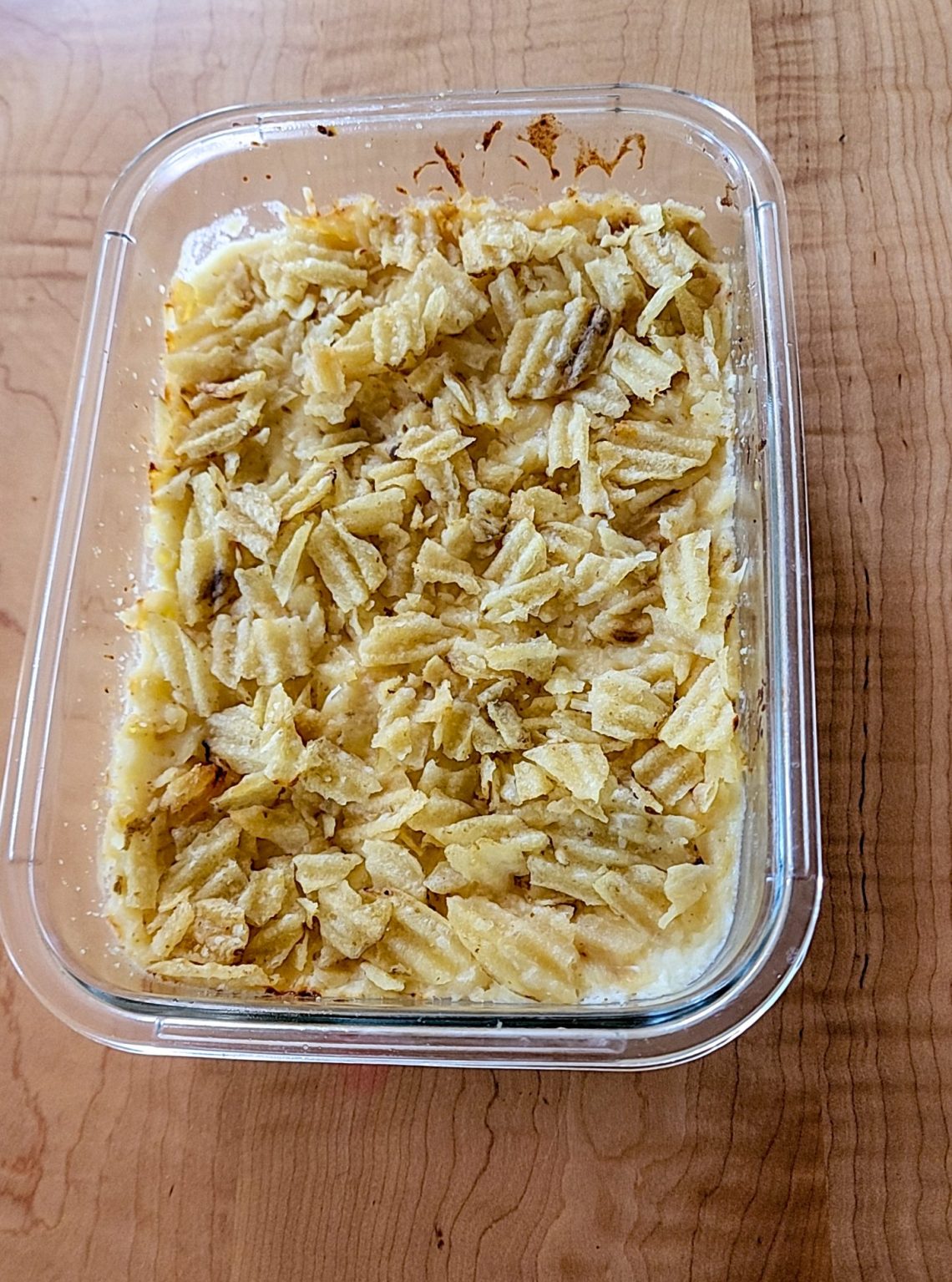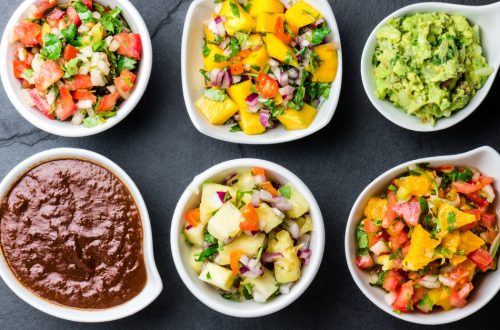
Mac and Cheese – the World’s Most Beloved Comfort Food
Is it macaroni and cheese, mac and cheese, or macaroni cheese? Depends on where you’re from. In Canada, the U.S., and the U.K., there are different names, but it’s essentially the same dish that’s at least hundreds of years old. It’s such a feel-good meal that it’s one of the most popular dishes in the U.S., according to the Oxford Encyclopedia of Food and Drink in America. I grew up with the Kraft Foods version in the box, first introduced in 1937 (“A meal for four in nine minutes for an everyday price of 19 cents”). Sales ballooned during World War II because families could buy two boxes with one ration stamp. My experience in the 1950s included the addition of chunks of Velveeta cheese.
Mrs. Farmboy and I are planning a trip to the mountains, and I’ll take along a few make-ahead meals. One (or more) of those meals will be that ultimate comfort food — macaroni and cheese. I plan to follow the Craig Claiborne version with layered high-quality, cooked macaroni; béchamel sauce; and grated cheddar cheese. I’ll top it with Parmesan cheese and butter and maybe potato chips for a little crunch.
Those noodles
Who invented mac and cheese? Its history is a bit muddled, and many cultures could claim it. The Chinese likely were the first to make noodles, and the ideas were transported along the Silk Road a thousand years ago. Persian cookbook author Najmieh Balmanglij writes in Food of Life that noodles were first transported by the Arabs from Persia to Sicily around the 10th or 11th century and came back to Persia as macaroni. In How to Cook the Victorian Way with Mrs. Crocombe, Annie Gray and Andrew Hann write that pasta was combined with cheese in the medieval period, probably a soft cheese flavored with various spices. In English Provincial Cooking, food historian Elisabeth Ayrton notes that macaroni cheese was first prepared at the court of King Richard II in about 1390. According to the recipe: “Macrows. Take and make a thin foil of dough and carve it in pieces, and cast them in boiling water, and seeth it well. Take cheese and grate it and butter cast beneath and above…and serve forth.” Seems Richard was known to be a great gourmet, but the dish didn’t catch on in England for another 400 years.
As for American gourmets, Thomas Jefferson was credited with importing pasta-making equipment from Italy while serving as ambassador in Paris. Encountering macaroni in Paris, he and his enslaved cook James Hemings brought the recipe back to Monticello. He reportedly served “a pie called macaroni” at a state dinner in 1802. It was clearly a dish that passed among the African diaspora in the South. Rufus Estes, born enslaved in Tennessee in 1857, became a private chef for the Pullman Private Car Service and served luxurious meals for industry barons and even American presidents. His cookbook, published in 1911, says to “Cook macaroni broken up into short length in boiling salted water. Boil uncovered for 20 or 30 minutes, then drain. Fill a buttered pudding dish with alternate layers of macaroni and grated cheese, sprinkling pepper, salt, and melted butter over each layer. Halve top layer of cheese, moisten with rich milk, bake in moderate oven until a rich brown.”
Different twists on macaroni
The dish slightly differs around the world. It’s big in Canada – more popular than poutine – and Canadians buy 25% of the 7 million boxes of Kraft Dinner sold every week. Scotland’s similar mac and cheese dish is known as macaroni pie. Swizerland’s Alplermagronen (Alpine herder’s macaroni) is made of macaroni, cream, cheese (often Emmental or Appenzeller), roasted onions, and occasionally potatoes, bacon, or ham. A Mexican twist features macaroni, onion, garlic, tomato sauce, and cheese (Monterey Jack, Muenster, queso quesadilla, or asadero). In France’s Perigord region, they make a richer gratin by adding ham, eggs, and tomato. Italy’s maccheroni con la salsiccia e le carote features sausage meat and grated carrots. Finally, a recipe from Persia includes ground lamb (or beef or turkey) and tomato sauce.
That’s what I love about food traditions that are shared around the world. We add our regional ingredients to cater to local taste patterns, but we can always learn from others new ways of putting a delicious and nutritious meal on the table. What’s your story about mac and cheese?
Do have ideas for topics you’d like me to cover? Or comments on this blog? Please click on “Read in Browser” or on the headline to view the blog on the website. You can log in and comment at the end of the blog to share your thoughts and start a discussion.
If you’d like to share the blog, click on the Facebook icon or one of the others. Thanks!




